2021 Dodge Charger SRT Hellcat Redeye Widebody Review: Blunt Honesty
- 797 horsepower is astonishing
- Supercharged V8 sounds out of this world
- Supercar performance comes at oddly good value
- If you really want to drive sensibly, the Hellcat won't fight you
- Dated interior
- Prodigious thirst for gas and appetite for tires
- Lacking in tech and active safety features
Everything about the 2021 Dodge Charger SRT Hellcat Redeye Widebody is ridiculous. The 6.2-liter supercharged V8 good for 797 horsepower and 707 lb-ft of torque is ridiculous, as is a supercar-shaming 3.6 second 0-60 mph. Driving this SRT madness – in, you'll note, ridiculous "Hellraisin" purple – requires a suspension of not only disbelief but any scraps of self-consciousness you might have left.
The fact that Dodge still sells the Charger – generally dating back to its 2006 debut, albeit with a 2011 interior and exterior refresh, and built on the LX platform from a couple of years earlier still – is pretty ridiculous, too. Then again, it allows for the Hellcat Redeye's beyond-ridiculous price tag. Even with destination and the gas guzzler tax, you're looking at $82,190.
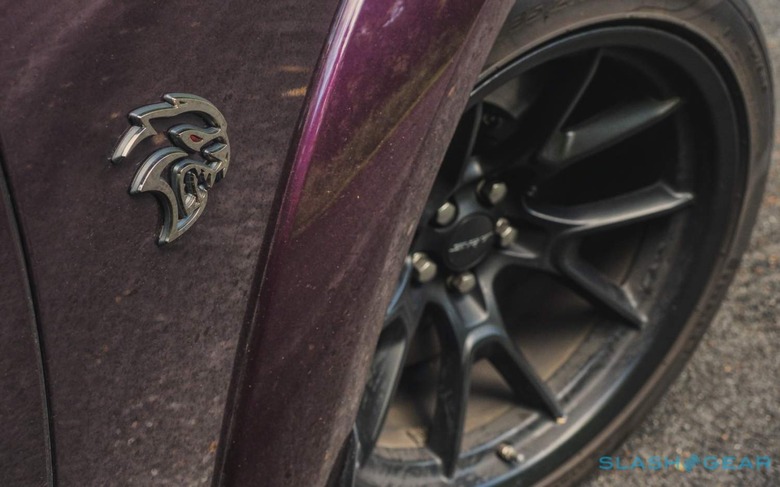
Clearly that still makes it an expensive car in the grand scheme of things, and even more so when you consider the Charger's age. All the same, for the sheer amount of power you're getting, Dodge's near $100-per-pony is hilariously good value.
The Hellcat recipe is a familiar one, at this point, and the SRT team has the formula down. Take a big engine, strap on what's necessary to squeeze even more horses from it, and then spend the rest of your development time figuring out a) how to keep it from overheating in an instant, and b) how to help drivers avoid spinning out into the sort of flambé that gets mockingly shared a billion times on Twitter and Instagram.
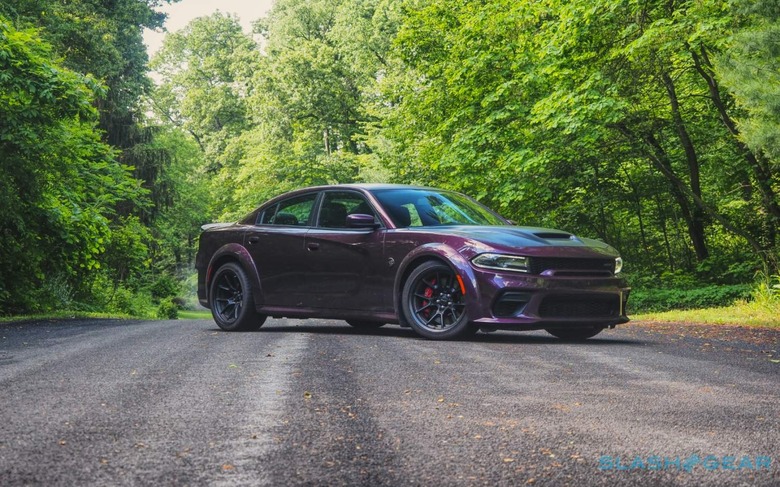
Vast wheels help with the second part, handsome 20 x 11 inch carbon black alloys that come as standard with the Redeye package. They're wearing 305/35ZR20 Pirelli P-Zero performance tires, sticky and generally liberal with their grip. Swapping out the all-seasons for some summer rubber would, of course, be even more preferable.
For the heat part, Dodge throws in its SRT Power Chiller, among a whole host of vents. The former relies on the A/C system's refrigerant to give the heat exchanger a helping hand; the latter punctuate the grille, hood, and lower fascia – as well as chunks of the bodywork elsewhere – to make sure the supercharged V8's prodigious appetite for fresh air is satisfied.
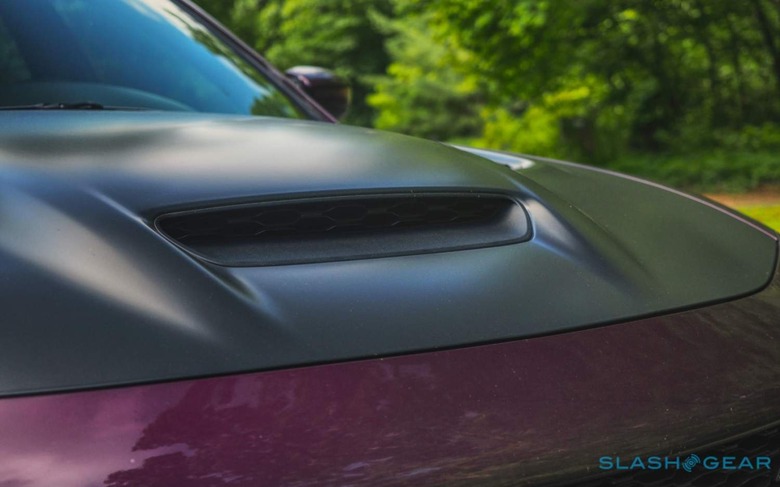
That it all works, with nary a complaint, proved a daily surprise. Particularly as the exterior thermometer climbed up into the 90s, a point where usually I'd be eyeing the engine temperature gauge in most cars built for raw speed and wondering when things would start getting seriously unhappy.
The Dodge didn't, though, and indeed the weird secret about the Charger SRT Hellcat Redeye Widebody is that it doesn't have to be heart-in-your-throat mayhem 24/7. Sure, the dual exhausts – an odd moment of visual restraint – burble with an unmissable volume, regardless of drive mode, but even with the full 797 horses waiting to be beckoned over, the power is easily modulated for relatively placid urban and highway use.
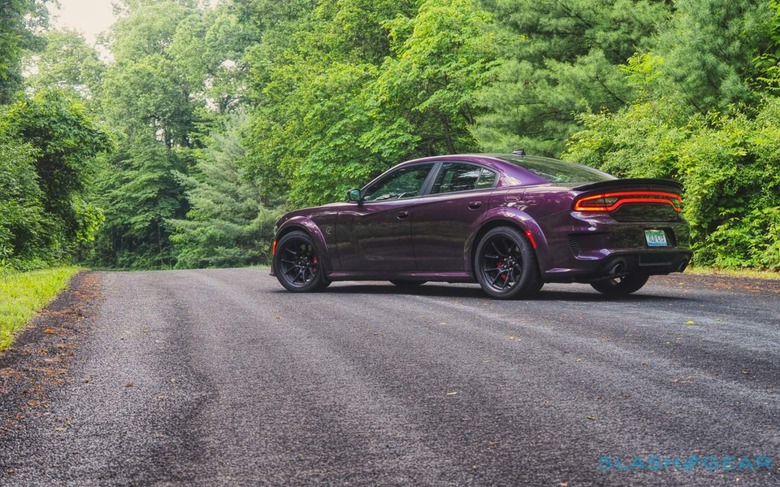
You don't want to hear about my highway cruising in the Hellcat, though, or even how Dodge's interior – albeit dated at this point – is comfortable and spacious up-front. You probably don't want to hear about how the Uconnect 4C infotainment system, though not the latest generation, is nonetheless pretty straightforward and smooth on its 8.4-inch touchscreen. The chunky Alcantara-clad seats are comfortable over long distances and supportive in tighter corners, though I suspect you don't really care so much about that, either.

So here's the meat of it. Bury the accelerator and the Hellcat's supercharger whines up to speed like a jet fighter turbine. It's a strange, distinctive, addictive sound: more exciting even, I'm of a mind, than the V8's gurgle and bark, simply because it's so foreign from the standard car experience.
You pay attention, and then you don't, because you're too busy watching the world coil around you as the Redeye hurtles forward. Long roads become very short roads with astonishing alacrity, and corners that were distant considerations suddenly make their upcoming presence desperately important. It is fast, and it feels fast.
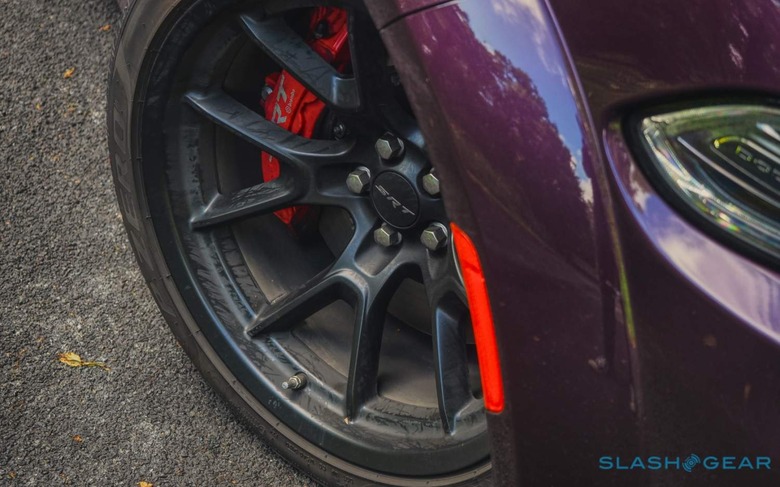
There are drive modes, of course, from Auto and Custom, through to the fastest track settings, and you can tweak things like suspension, transmission, steering feel, and even the maximum power you have to play with. These things will undoubtedly make a difference if you're lucky enough to have a test track, but day to day the outright pace here transcends the settings. Put it this way: whichever mode you pick, whichever configurations you combine, the top speed is still 203 mph.
Spinning the rear wheels is easy, if that's your bag, but a little more care produces less visual drama and more cornering talent. It's a big car, and a heavy one, but grip and pure tuning expertise means corners aren't as terrifying as you might first expect. Indeed the Redeye in the turns was the biggest shock of all, and combined with prodigious 6-piston Brembo front brakes clamping down on 15.7-inch two-piece discs there's a lot going on to make sure you stay on the asphalt rather than in the nearest ditch.
Eventually, yes, the Hellcat Redeye will spin around and bite you, but as with the dangers of the animal kingdom the warning signs were upfront from the start. Public roads are, of course, inadequate for getting anywhere near this car's limits.
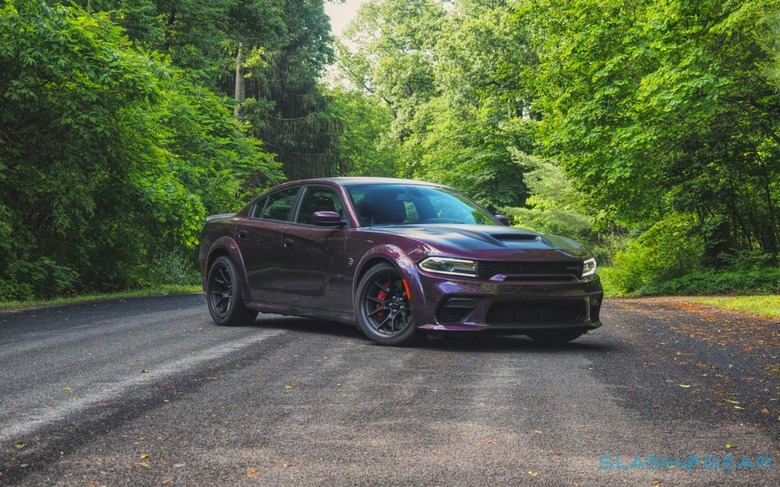
Rival sports sedans may fall short on power, but newer cars like the BMW M5 Competition have better balance when it comes to the assistance and safety tech. There's no adaptive cruise on the Charger, nor even automatic emergency braking or collision warnings. There are, at least, blind spot sensors and reversing warnings; you get a backup camera and parking radar front and rear, but no 360 view to ease your fears of scuffing those lovely wheels.
Even if you manage to keep them away from the curb, best to budget for regular tire replacements. Such is the world when you're playing with this number of horses. Similarly, thirst is the unsurprising nature of the beast: Dodge quotes 12 mpg in the city, 21 mpg on the highway, and 15 mpg combined. The surprise is that, for cruising, they're all achievable numbers, but spend any time at all using the Hellcat Redeye like it's meant to be used and things rapidly plunge down into the single digits.
2021 Dodge Charger SRT Hellcat Redeye Widebody Verdict
You have to ask yourself just how far Dodge can push this particular recipe for ridiculousness. On the one hand there's the sheer mechanical challenge of coaxing increasing degrees of power out of what's now an old engine, and entrusting it to an equally old platform. However there's also the reality of the rest of the automotive world, and indeed Dodge's own new parent group.
Stellantis – which combines Fiat Chrysler Automobiles and Groupe Peugeot – has bold electrification plans and aggressive platform-sharing targets, and it's not entirely clear how – or if – a 700+ horsepower American muscle-sedan fits into that strategy.
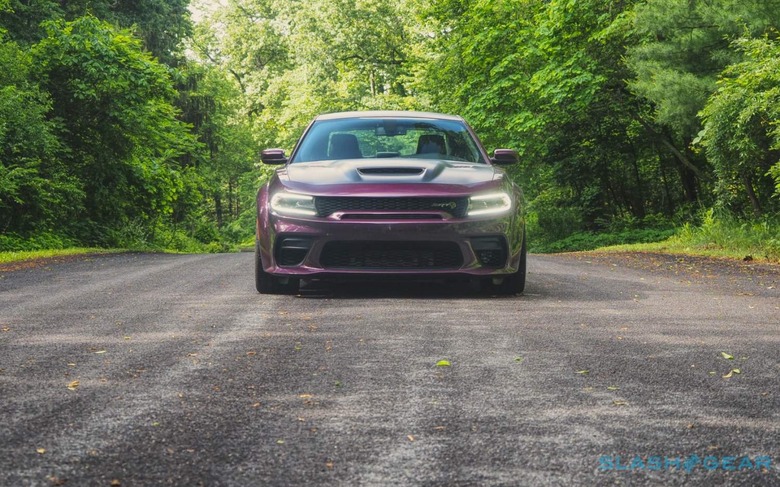
Chatter of some sort of electrified Hellcat has bubbled away for years now, and honestly it does make a little sense. Nothing lights up a set of tires like a few beefy electric motors when it's 0-60 that most matters to you. Question is, could a Hellcat hybrid or – dare I even suggest it – a pure Hellcat EV flatter (or just flatten) the other senses in the same way this supercharged superhero does?
Luckily that's not my decision to make, and for all I love EVs there's a part of my heart that can't quite resist the Charger SRT Hellcat Redeye Widebody's brazen charms. It is loud and raucous and atrociously blunt: a missile with a purple paint job, and whether they love it or they hate it, people can't help but stare. We may not have much more of this ridiculousness left, so you may as well enjoy it while you can.
